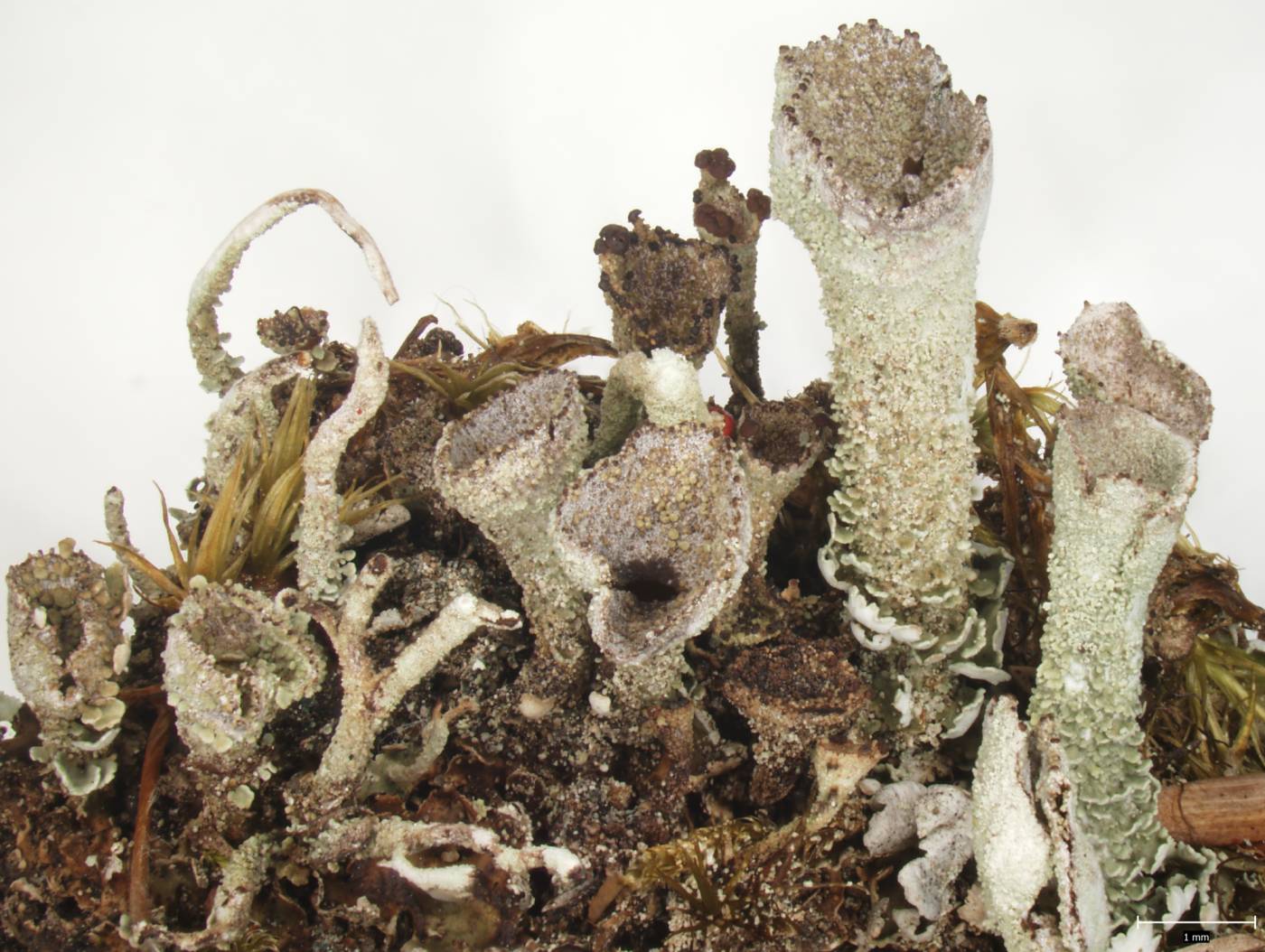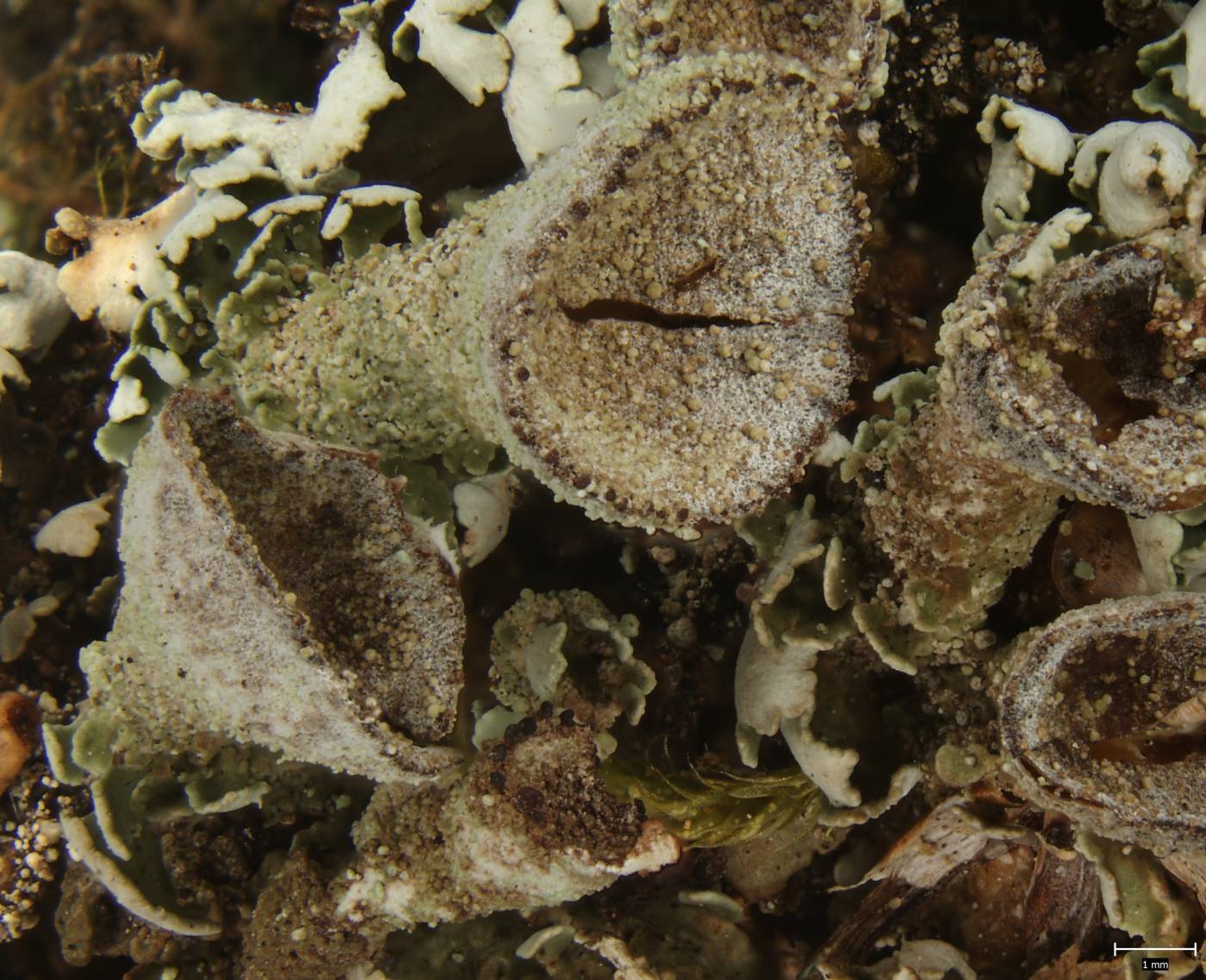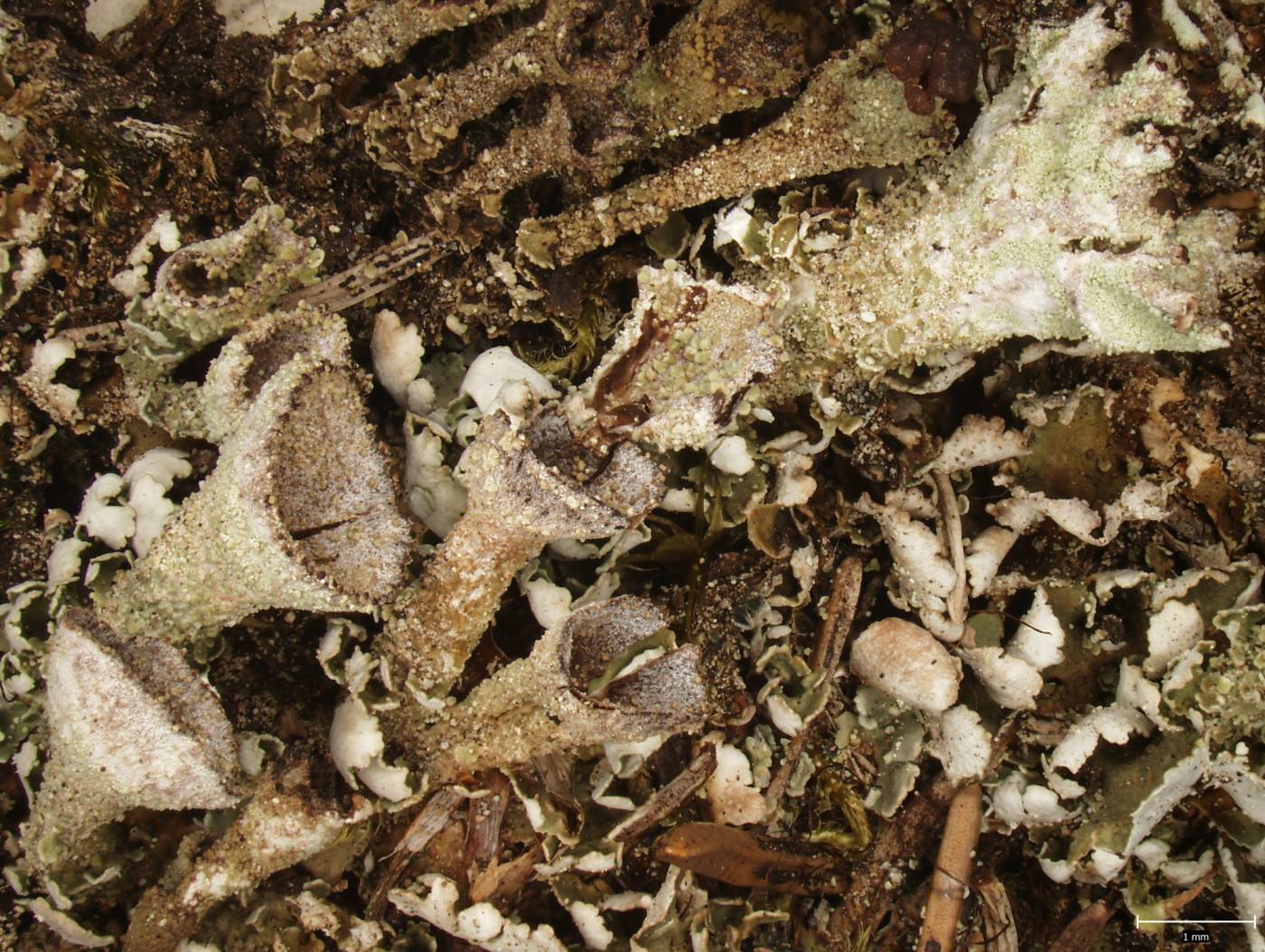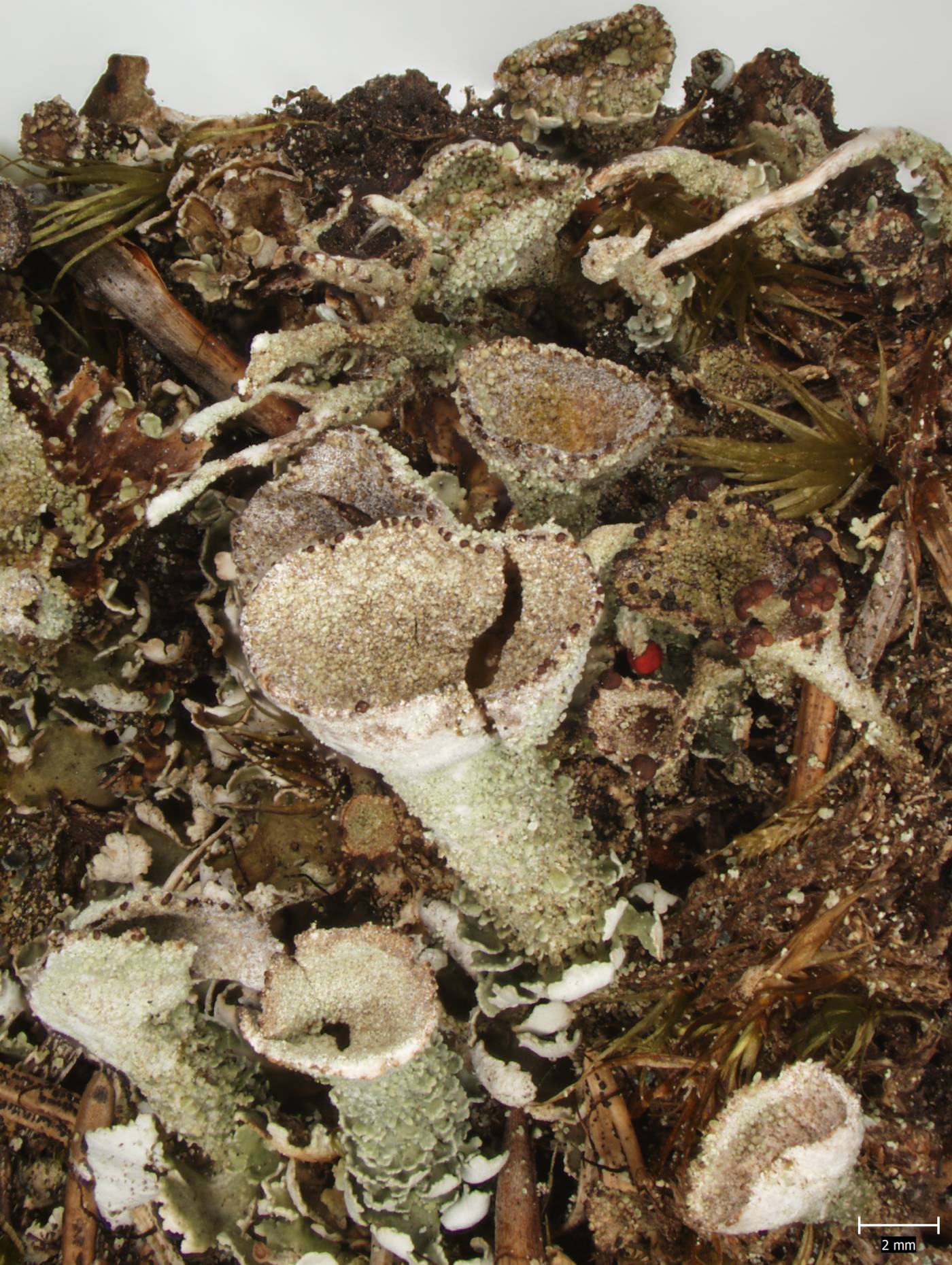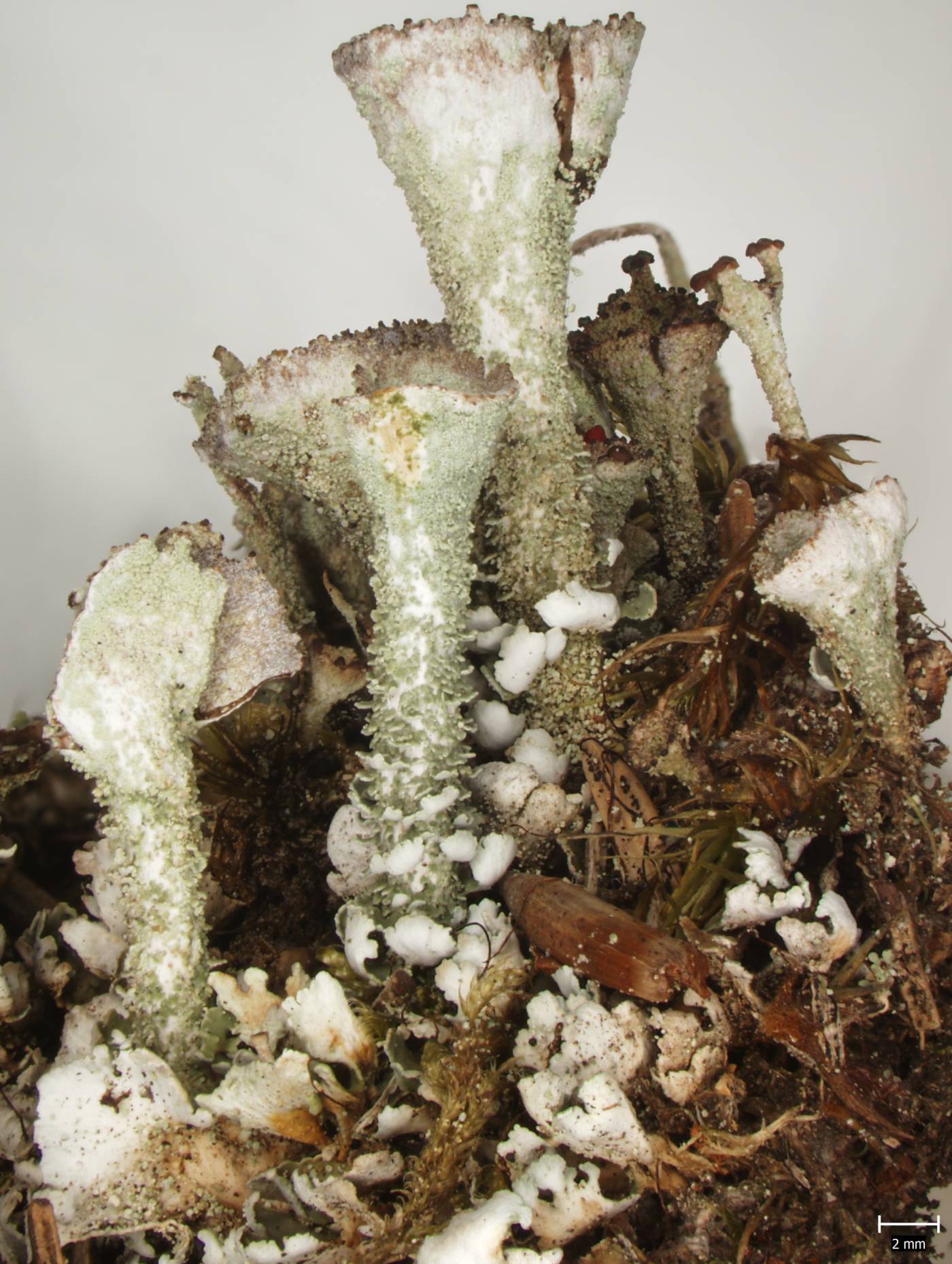The species is often included in C. chlorophaea agg., although it is compared to C. fimbriata in the original description (Brodo & Ahti 1996). Phylogenetically, it is not related to either of them (Stenroos et al. 2019). C. asahinae is mainly characterized chemically. It contains fumarprotocetraric acid and fatty acids, usually from the rangiformic acid group. Also, a chemotype with protolichesterinic acid is known. The aliphatic compounds may sometimes be absent, so its distinction from C. chlorophaea s. str. is problematic without molecular data. Morphological distinction of C. asahinae is ambiguous but squamules or granules at the podetium base are considered an auxiliary characteristic (Holien & Tønsberg 1985, Burgaz et al. 2020).
The species grows on humus or acidic soil, rarely also decaying wood. It was originally described from North America and found in Europe in the 1980s when it was also first published from the Czech Republic (Holien & Tønsberg 1985). This single historical record refers to the collection of J. Anders from the surroundings of Nový Bor published as exsiccate of J. Sandstede (Cladoniae exsic. n. 1153, as Cladonia chlorophaea). In Europe, it is a rare suboceanic lichen, surprisingly not known from the Alps (cf. Nimis et al. 2018). In central Europe, C. asahinae has most commonly been recorded in the Czech Republic, specifically in the Lužické hory, Jizerské hory, Krkonoše, Hrubý Jeseník, Brdy, Šumava Mts and the Soutok area. It is only known from a limited number of localities and is probably overlooked.
Literature: Holien H. & Tønsberg T. (1985): Notes on Cladonia asahinae, C. conista and the C. grayi-group in Norway. – Gunneria 51: 1–26. Brodo I. M. & Ahti T. (1996): Lichens and lichenicolous fungi of the Queen Charlotte Islands, British Columbia, Canada. 2. The Cladoniaceae. – Canadian Journal of Botany 74: 1147–1180. Nimis P.L., Hafellner J., Roux C., Clerc P., Mayrhofer H., Martellos S. & Bilovitz P.O. (2018): The lichens of the Alps – an annotated checklist. – Mycokeys 31: 1–634. Stenroos S., Pino-Bodas R., Hyvönen J., Lumbsch H. T. & Ahti T. (2019): Phylogeny of the family Cladoniaceae (Lecanoromycetes, Ascomycota) based on sequences of multiple loci. – Cladistics 35: 351–384. Burgaz A. R., Ahti T. & Pino-Bodas R. (2020): Mediterranean Cladoniaceae. – Sociedad Española de Liquenología (SEL), Madrid.
taxonomic classification:Ascomycota → Lecanoromycetes → Lecanorales → Cladoniaceae → Cladonia
Red List (Liška & Palice 2010):DD – data deficient
Red List (Malíček 2023):C3 – endangered
Occurrence in the Czech Republic
All records: 16, confirmed 15. One click on a selected square displays particular record(s), including their source(s).
